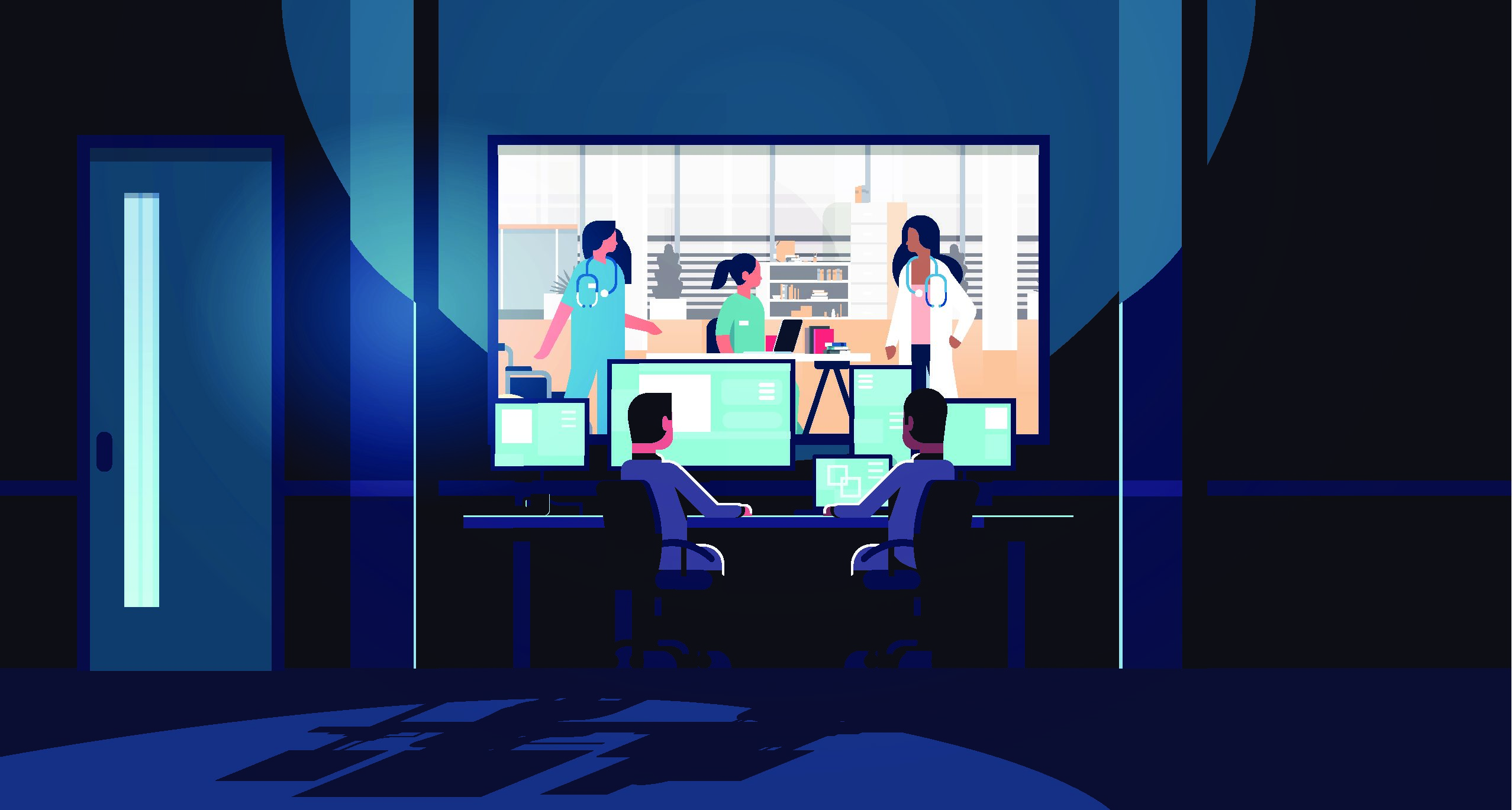By Adriana Krasniansky
In many medical circumstances, clinicians and caregivers may choose not to leave a patient alone. For example, a patient may present a fall risk, experience confusion and agitation, or be at risk of self-harm. Traditionally, in such situations, a hospital assigns the patient a sitter, or a caregiver who provides patients patient supervision and companionship.
The need for sitters in hospital settings is rising, as patient loads increase and fewer patients have family members who are able to stay with them for long periods of time. Sitters are also a considerable investment for hospitals; one community hospital reported employing 14 sitters a day, totaling $425,000 in costs annually. Many healthcare networks are exploring the possibility of TeleSitters, or virtual monitoring systems to support patient care. In this article, we review the national adoption of TeleSitters and point out benefits and considerations to their implementation.
What are TeleSitters?
TeleSitters describe a new class of clinical monitoring technologies that track patient activity and notify staff of any concerns or emergency situations. Most TeleSitters are portable camera units mounted on rolling IV-like poles that provide live video and auditory feeds from the patients’ rooms. On the backend, they operate as closed-circuit camera networks, where a clinical technician monitors video feeds of 12-57 patients at a time. If a technician notices something astray in a patient room, they can broadcast a message to the patient room and notify the staff. One hospital reported that its average staff response time after a TeleSitter alert is 15.1 seconds.
A predominant TeleSitter technology, AvaSys, is currently being implemented in over 300 healthcare facilities nationwide. While TelSitters most often complete visual monitoring, we can forecast that advances in IoT and biometric technologies are paving the way for multi-sensory systems that track patients’ vitals and activity simultaneously.
The Benefits: Scaling Patient Safety, Improving Hospital Efficiency, Reducing Burnout
TeleSitters are critical patient supervision tools, particularly for hospitals that are understaffed or cannot afford the number of sitters that their patient load requires. According to one industry report, a TeleSitter system decreased patient falls across 11 hospitals by 51%. AvaSure, the maker of Avasys, estimates that TeleSitter implementation, including the technology, training, and labor, costs about 20% of the average cost of hiring sitters. While costs vary by institution, the technology can save hospitals up to $2.5 million over two years.
TeleSitters also stand to reduce factors contributing to burnout of frontline patient care staff, mainly nurses, hospital aides, and healthcare security. In a 2014 national survey of healthcare safety professionals, 59.2% felt the use of TeleSitters for 1:1 observation would be useful.
Considerations: Privacy, Passive Observation, and Companionship
Sitters, and subsequently TeleSitters, were borne out of the historical interest to move patient healthcare beyond the industry’s use of punitive measures such as bed restraints and seclusion rooms. In this frame, both sitters and TeleSitters are clear examples of progress in the patient care experience.
However, the shift from individual sitters to TeleSitters does introduce new ethical considerations into the patient care environment. Foremost, constant monitoring over video raises concerns over patient privacy. Many TeleSitter manufacturers emphasize that their cameras don’t store any images, video transmission is limited to CCTV (not uploaded or analyzed through any cloud software), and devices are equipped with “virtual curtains” that can be activated to protect patient privacy. Despite such privacy settings, many patients are concerned about establishing and maintaining privacy within their hospital rooms.
In a research study conducted by Ohio State University, terms such as “privacy” and “personal space” were identified as components of the core patient need, comfort. An additional consideration is a patient’s fear and uncertainty of always being monitored. This falls under the patient’s need for control—controlling “who sees me” and securing one’s surroundings.

Framework: The Ohio State University, 2017
Rev. Alan Cossitt, a hospital chaplain and former software engineer, shares his perspective on how TeleSitters affect patient understandings of control and companionship within the hospital room. “[In my chaplaincy experience,] the presence of a TeleSitter can lead to fewer deep conversations,” said Cossitt, who noted that the Telesitters’ constant surveillance had emotional effects on many patients.
Cossitt continues to discuss how the introduction of TeleSitters fundamentally shifts certain hospital relationships. “The [human] sitter is often a confidante and friend to the patient during their illness, especially for the emotionally vulnerable…As a chaplain, I’m trained in building community. I’ve really come to see how new technologies change the culture of the hospital, and that caring culture is very important to me. I want to make sure that we preserve it.”
What’s Next
TeleSitters present clear and remarkable improvements to hospital operations: they reduce costs, improve staffing allocation, and help the hospital focus costs on improving and scaling access to care. However, the shift from individual sitters to Telesitters requires careful consideration of the effects on the patient relationship. Hospitals should consider how to communicate patient rights to privacy, comfort, and control, even in monitored environments. They should also consider how to continue offering the healing benefits of extra-medical human interaction (such as sitters, chaplains, and volunteer visitors) to patients, possibly investing in these quality-of-care measures.
